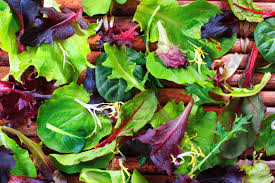Choose a Whole Foods Plant-Based or Whole Foods Vegan Eating Pattern
So the other day I am at the gym and a personal trainer happens to tell me that I am the first vegan he has met that is not overweight (by the way I consider myself 95% vegan (you might call me a flexitarian or simply plant-based) which means I love food and if they accidentally put mayonnaise (because I have not seen vegenaise yet at a regular restaurant) on my veggie burger I will probably not be sending it back). I was shocked by that comment. Thinking back, a friend had told me she had wanted to introduce me to her vegan friend who lives nearby (and she is by no means thin) and my brother had made the comment that he had gone to the Vegan Festival where there was nothing but fried tofu burgers with doughnuts for buns….???
The previous brings me to the conclusion that now in addition to having the classifications of vegetarian, lacto-vegetarian, ovo-vegetarian, lacto-ovo vegetarian, pescatarian, and raw vegan, we need to add to the mix, definitions for plant-based and vegan. To what degree are the plants consumed being processed and how much of these processed foods are we eating on a daily basis?
A whole foods plant-based eating pattern and a whole foods vegan eating pattern is what always came to mind when I thought of these two but technically a vegan will simply not eat animals or anything that comes from them and could possibly eat everything else under the sun, meaning a very high processed eating pattern that is not healthy.
The example of the best eating pattern is definitely either a whole foods plant-based or a whole foods vegan eating pattern for health. I recommend it for those that want to lower inflammation and want optimal health, those that would like to stop counting calories, those that have cancer or a family history of it, and those that have high cholesterol specifically.
But you have to know what you are doing in order to have that natural glow & energy and avoid becoming deficient in vitamins and minerals which may lead to sugar and other cravings (there are many vegans posts on desserts/sweets).
Meals need to be centered around whole, natural foods such as intact grains and legume-type grains and not sugared flakes for breakfast, fast-food burritos for lunch, and white pasta with a side of white garlic bread and with gobs of sauces on both for dinner with chips, donuts, candy, and other baked goods for snacks. (These meals ARE okay once in a while).
If you are interested in learning about Whole Foods Plant-based or Whole Foods Vegan Nutrition, come and see us. We are a plant-based office.

